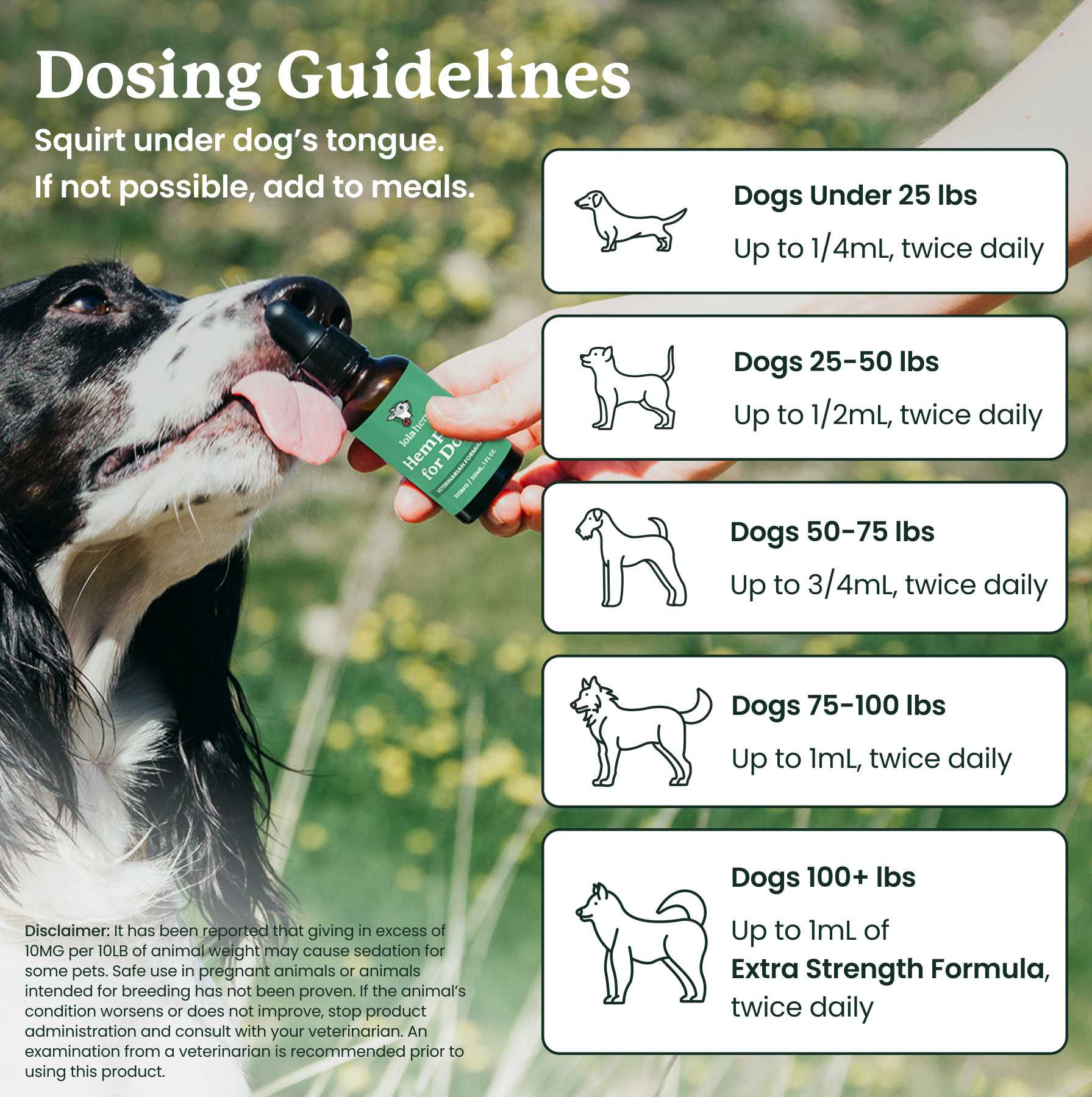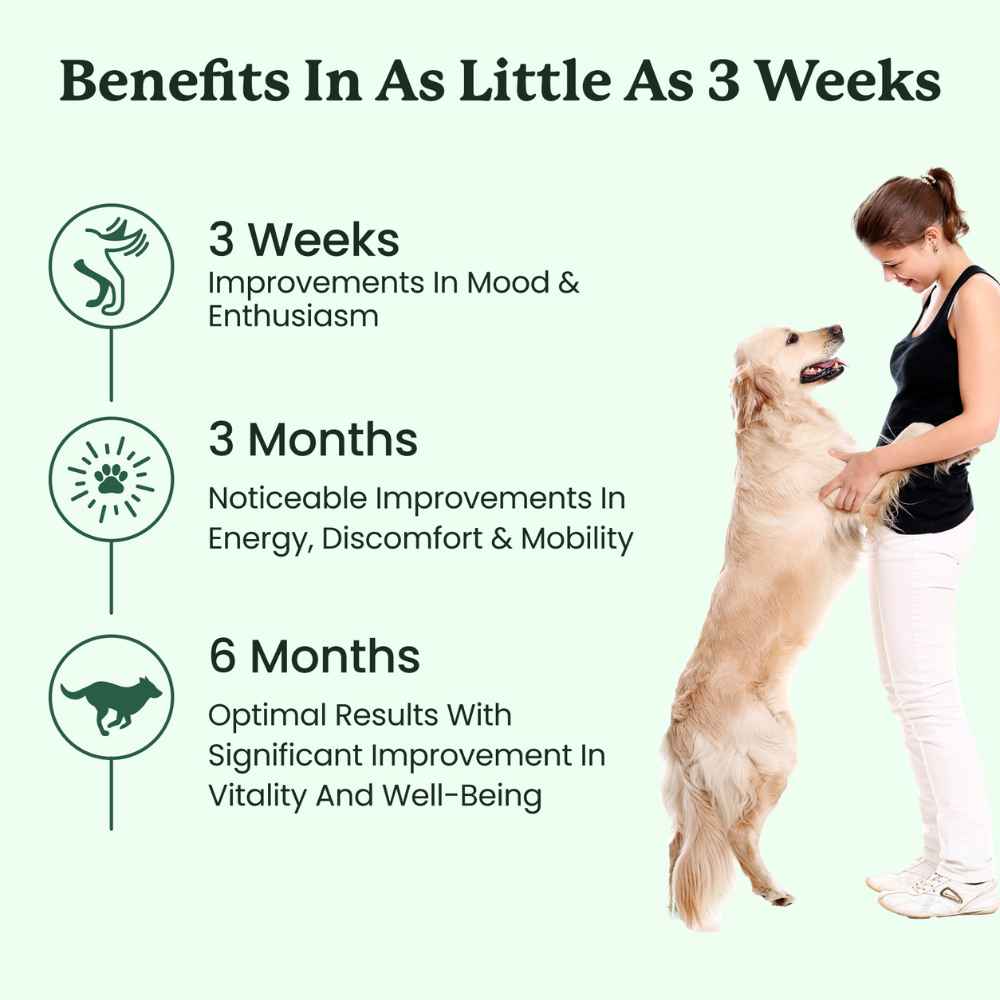You've watched your furry friend grow from a playful pup to a wise, gray-muzzled companion. As your dog ages, you're entering a new phase of pet parenthood; caring for a senior dog. Don't let the thought of senior dog issues intimidate you; instead, see this as an opportunity to deepen your bond and provide the best care possible for your older dog.
This guide is your roadmap through the old dog's golden years. You'll learn to spot subtle changes in your older dog's behavior, adapt your home for their comfort, and find new ways to keep them happy and engaged.
When is A Dog Considered Senior?
A dog’s seniority depends on several factors. Breed size is a major one. Small dogs like Chihuahuas might not be seniors until 10-12 years old. Medium breeds often reach senior status around 8-10 years. Large breeds like Labrador Retrievers are usually considered senior at 6-8 years. Giant breeds such as Great Danes may be seniors as young as 5-6 years old.
Other factors that may affect how quickly dogs age include:
- Diet
- Exercise
- Genetics
- Overall health
Signs a dog is entering its senior years can be subtle at first. You might notice your dog slowing down on walks. They may take longer to get up after resting. Grey hairs often appear around the muzzle and eyebrows. Some dogs develop cloudy eyes due to normal aging changes.
Behavior changes can also signal the start of the senior years. Your dog might sleep more or become less interested in play. They may have trouble hearing when called or seeing toys during fetch. Some older dogs become more anxious or clingy with their owners.
Common Health Issues in Senior Dogs
As dogs enter their senior years, they become more prone to various health issues. Understanding these common problems can help pet owners provide better care for their aging companions. Here's an overview of the main health concerns affecting older dogs:
Kidney Disease
Kidney disease is a frequent issue in senior dogs, affecting waste removal from the body. Symptoms include increased thirst and urination, weight loss, and fatigue. Regular blood and urine tests can help your vet monitor your dog’s kidney function.
Liver Disease
Liver disease can cause various symptoms in senior dogs. These may include vomiting, diarrhea, and yellowing of the eyes or skin. Some dogs with liver problems gain weight due to fluid buildup and others lose weight from poor appetite. Liver disease can also affect your dog's behavior as they might seem confused or less alert.
Heart Disease and Cardiovascular Issues
Heart disease becomes more common as dogs age. Signs include coughing, tiring easily, and breathing faster. Some dogs with heart issues may faint or collapse. Regular vet check-ups can catch heart problems early. Treatment often involves medication and diet changes.
Cognitive Dysfunction Syndrome
Cognitive dysfunction syndrome is like dementia in humans. It affects many older dogs. Signs of canine cognitive dysfunction include getting lost in familiar places, changes in sleep patterns, and forgetting learned behaviors. Some dogs with cognitive decline may seem anxious or bark for no reason, but your vet can suggest solutions such as the use of medium chain triglycerides (MCTs) and Brain Protection Blend (BPB) supplements to manage symptoms and keep your dog comfortable.
Sensory Decline
Hearing loss is also common in senior dogs. You might notice your dog not responding to commands or sounds. Some dogs become startled easily when approached. Others may bark more because they can't hear themselves. Hand signals can help communicate with dogs losing their hearing.
Vision loss affects many older dogs too. Cataracts and other eye problems can develop. Dogs with poor vision might bump into things or seem hesitant in new places. They may have trouble finding toys or food bowls. Most dogs adapt well to vision loss with some help from their owners.
Dental and Joint Problems
Dental disease is a big issue for senior dogs. It can cause pain and make eating difficult. Bad breath, drooling, and bleeding gums are signs of dental problems. Regular teeth cleaning and check-ups will help prevent serious issues. Some older dogs may need teeth removed to stay comfortable.
Joint pain and arthritis make moving around harder for senior dogs. They might limp or struggle to get up after resting. Cold or damp weather often makes joint pain worse. Vets can suggest ways to reduce pain and keep dogs moving comfortably. This might include medication, supplements, or special exercises.
Urinary Tract Infections and Cancer
Urinary tract infections happen more in older dogs. Signs include peeing more often, accidents in the house, and pain while peeing. Some dogs with UTIs might seem tired or lose their appetite. Quick treatment with antibiotics usually clears up a urinary tract infection. Frequent UTIs might mean there's another health issue to check.
Cancer rates go up in older dogs. Different types can affect various body parts. Bone cancer is common in large breeds. It can cause limping or swelling in the legs. Brain tumors might lead to seizures or behavior changes. Early detection is key for treating cancer in dogs. Regular vet visits will help catch problems early.
Immune System and Metabolic Changes
The immune system weakens with age. This makes senior dogs more prone to infections and other health issues. They might take longer to recover from illnesses. Keeping up with vaccinations and regular check-ups helps protect older dogs.
As dogs age, their metabolism slows down. This can lead to weight gain if their diet isn't adjusted. Extra weight puts more stress on joints and organs. It can make health problems worse. On the flip side, some senior dogs lose weight. This might be due to dental issues, decreased appetite, or other health problems.
Many older dogs develop multiple health issues at once. This can make diagnosis and treatment tricky. Your vet will often need to balance different treatments carefully. As a pet parent, you play a big role in monitoring your dog's health and reporting changes.
Changes in Behavior and Lifestyle
As dogs enter their senior years, they often experience significant changes in their behavior and lifestyle. These changes can affect their daily routines, interactions, and overall quality of life.
Reduced Activity and Mobility
Senior dogs will typically show decreased energy levels and may struggle with mobility. They might not be as eager for long walks or play sessions. Short, frequent walks often work better for older dogs. Swimming can be a good low-impact exercise if available.
Difficulty climbing stairs is common in senior dogs. Joint pain or muscle weakness can make it hard to navigate steps. Some dogs might need help or avoid stairs altogether. Ramps or lifting help can make life easier for these dogs.
Sleep Pattern Alterations
Changes in sleeping patterns often happen in older dogs. Some sleep more during the day and less at night. Others might pace or seem restless at odd hours. This can be part of normal aging or a sign of cognitive issues. Keeping a consistent routine can help manage sleep changes.
Anxiety Issues
Increased anxiety is seen in many senior dogs. They might become more clingy in new situations. Some develop separation anxiety even if they were fine being alone before. Creating a calm, predictable environment helps anxious older dogs feel secure.
Weight Management Challenges
Weight gain is a common issue in less active senior dogs. It's important to adjust their diet to match their lower energy needs. Some older dogs might need special low-calorie foods. Regular weigh-ins help catch weight changes early.
On the other hand, weight loss can also be a problem. Decreased appetite is common in older dogs. This might be due to dental pain, nausea, or other health issues. Some seniors need more appealing foods or different feeding schedules to maintain a healthy weight.
Appetite and Eating Habits
Many older dogs experience changes in their appetite. Some become pickier eaters. Others might forget to eat if they have cognitive issues. Warming food or adding low-sodium broth can make meals more appealing. Several small meals a day often work better than one or two large ones.
As dogs age, their senses of smell and taste may decline. This can affect their interest in food. Trying different textures or flavors might help stimulate appetite. Always check with a vet before making major diet changes.
Grooming and Self-Care Needs
Senior dogs often need help grooming themselves. Their skin might become drier or more sensitive. Gentle, regular brushing helps keep their coat healthy and gives you a chance to check for any new lumps or sores.
Social Interactions and Play
Some older dogs become less interested in toys. Finding new, gentler ways to engage them is important. Puzzle toys that dispense food can provide mental stimulation. Short training sessions using treats can be a fun, low-key activity.
As dogs age, they might become less tolerant of other pets or children. Providing quiet spaces where they can retreat helps reduce stress. Supervising interactions and respecting the older dog's need for rest is important.
Many behavior changes in senior dogs have medical causes. Always check with a vet if you notice sudden or significant changes. Treating underlying health issues often improves behavior problems.
Conclusion
Recognizing the declining quality of life in senior dogs is challenging but important. Signs might include loss of interest in favorite activities, inability to control bodily functions, or constant pain despite treatment. Some dogs stop eating or become withdrawn. It's crucial to consider the dog's overall well-being, not just physical health.
When to consider euthanasia is a deeply personal decision. Vets can offer guidance based on the dog's condition and prognosis. Many pet parents use quality-of-life scales to track changes over time. The goal is to prevent unnecessary suffering while not ending life too soon. It's okay to seek second opinions or take time to think things through.
Coping with the loss of a senior dog is difficult. Many people find comfort in memorializing their pets in some way. This might involve creating a photo album, planting a tree, or donating to an animal charity. Support groups for pet loss can be helpful. Remember that grief is normal and everyone processes it differently.
Enjoying the golden years with your aging pup can be deeply rewarding. While there may be challenges, this time also offers opportunities for deep bonding. Many owners find their relationship with their dog grows even stronger in their senior years. Your dog can enjoy a happy and comfortable life well into old age with proper care and attention.
Frequently Asked Questions About Senior Dogs
What age is a dog considered a senior?
Dogs are typically considered senior between 6 and 12 years old, depending on their breed size. Large and giant breeds become seniors earlier, while small breed dogs age more slowly.
What are common signs of aging in senior dogs?
Common signs include slower movement, grey hairs, reduced hearing or vision, changes in sleep patterns, and decreased interest in play or exercise.
How can I make my home more comfortable for a senior dog?
Providing soft bedding, ramps for stairs, non-slip flooring, and easy access to food, water, and potty areas can significantly improve comfort for older dogs.
What health issues should I watch for in senior dogs?
Senior dogs are more prone to arthritis, kidney disease, liver disease, cancer, cognitive decline, dental issues, and sensory loss.
How often should senior dogs see the veterinarian?
Most senior dogs should have veterinary checkups at least twice per year to monitor for age-related changes and catch health issues early.









